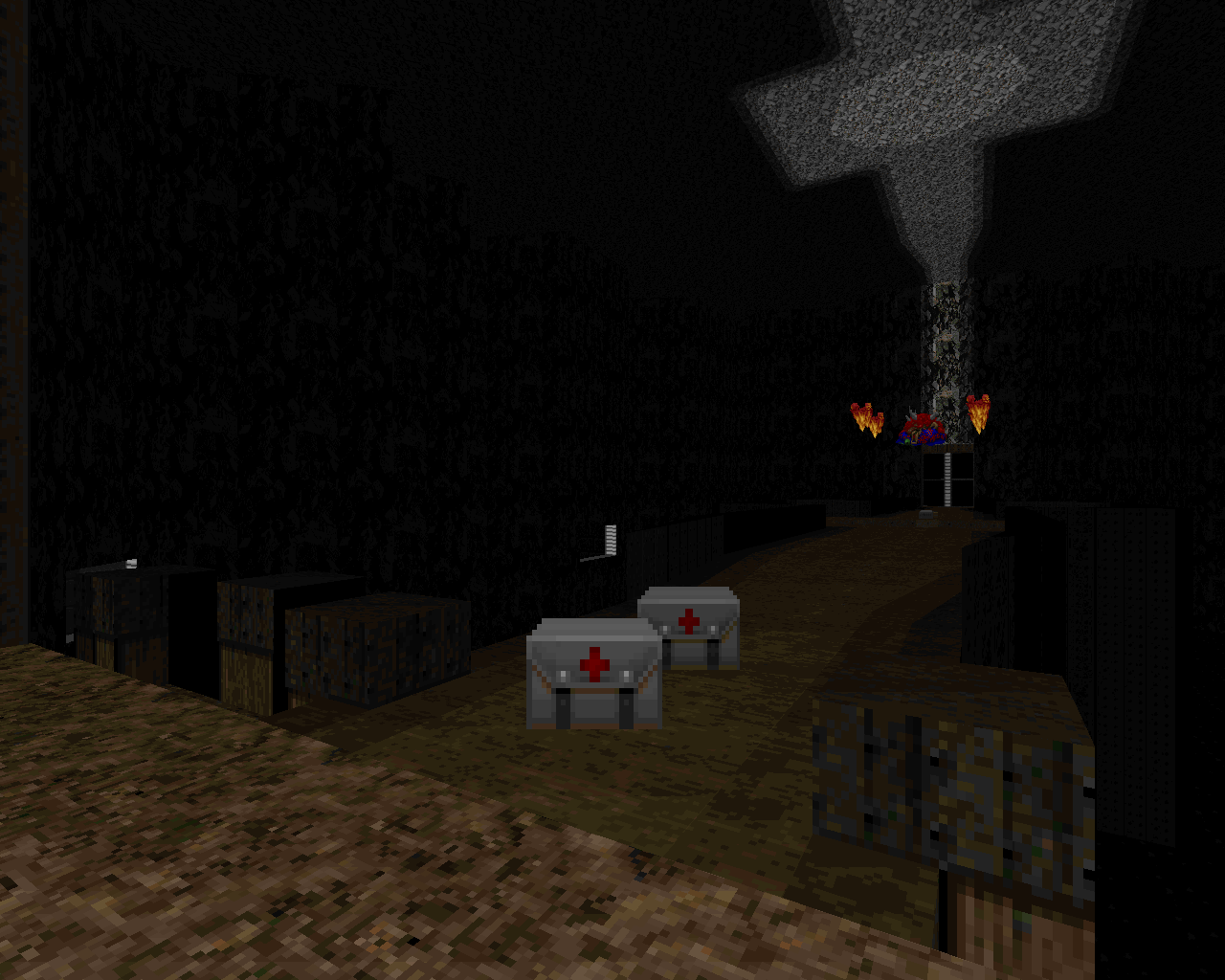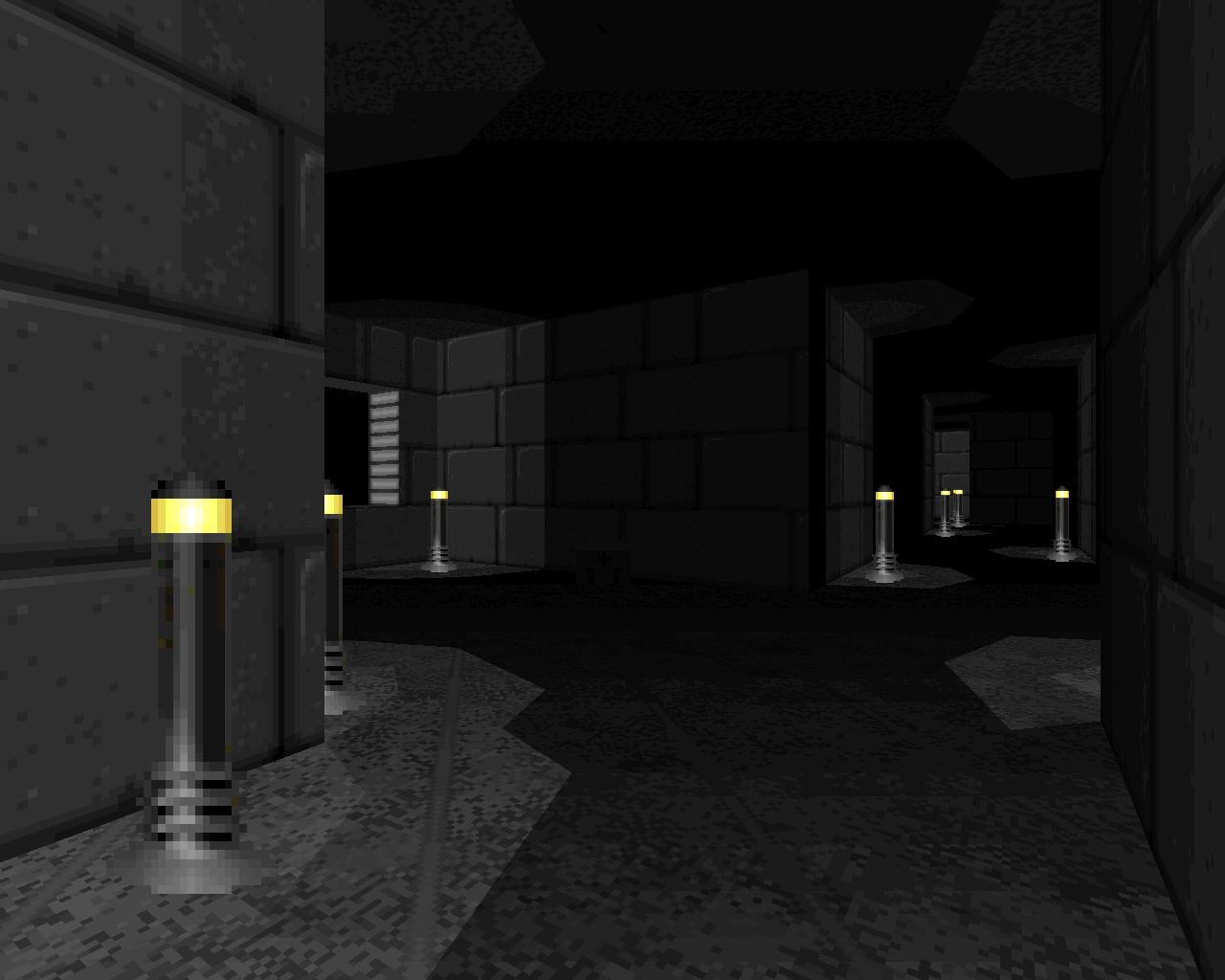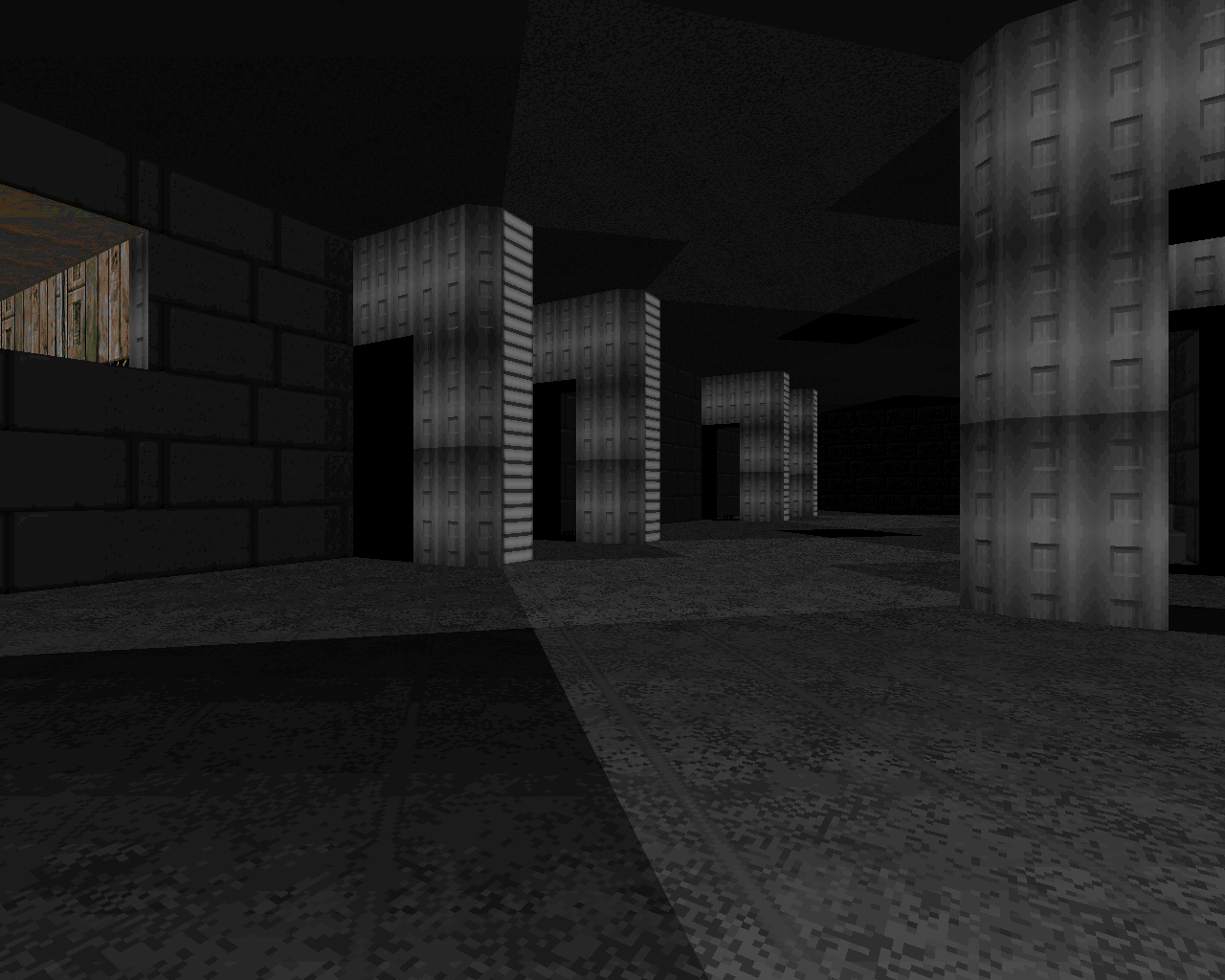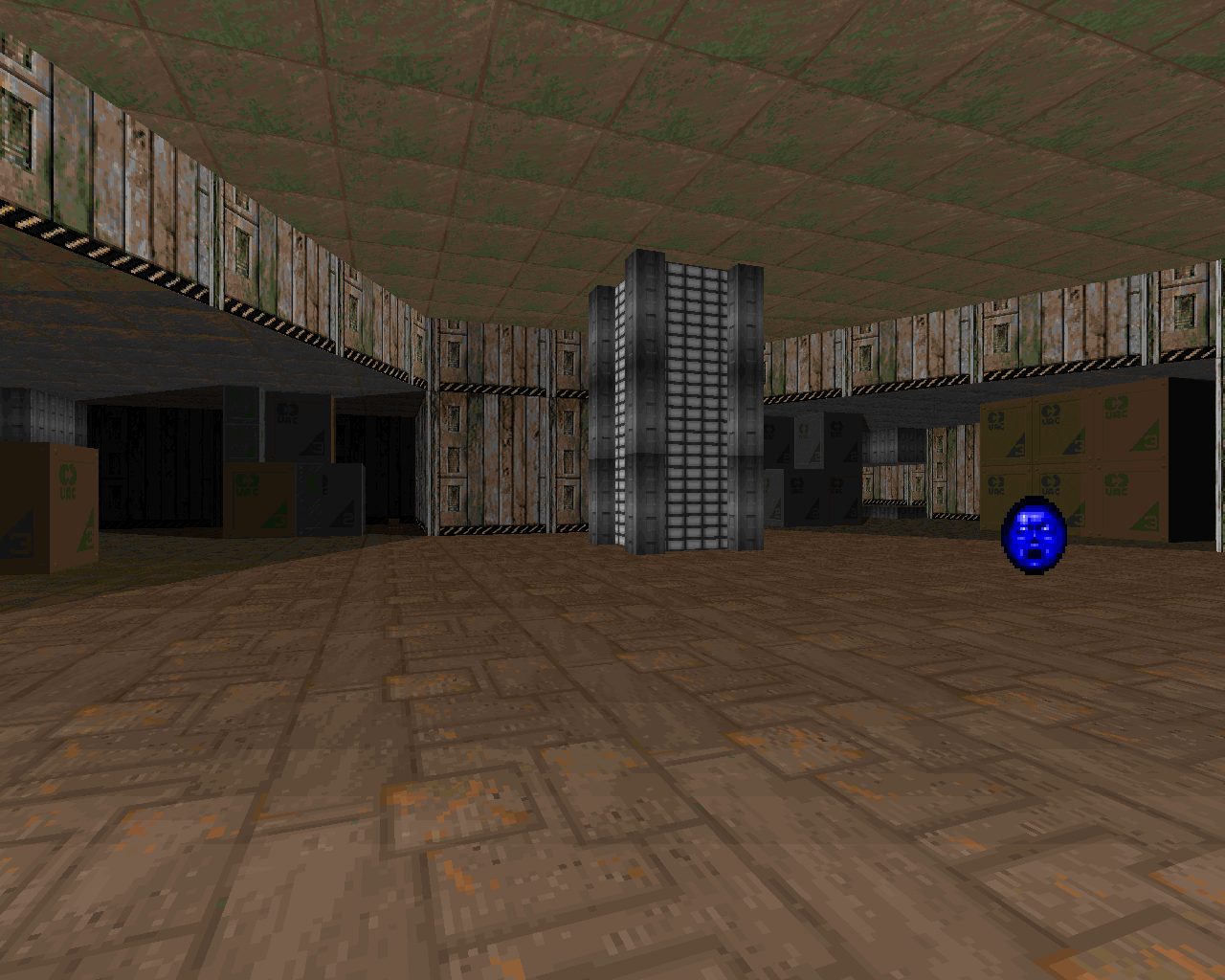NO SUN 5
by Malcolm Sailor
1997 was Malcolm's big year. It marked the release of The Talosian Incident, where roughly nine levels worth of his work made their big debut; the start of his CHORD series, responsible for three of the other entries in Doomworld's Top 100 WADs of All Time; and the end of NO SUN, a run of five maps that attempted to tell Sailor's most cohesive story. The whole thing wrapped up at the end of April with NOSUN5, a MAP27 replacement for Doom II. The author is pretty proud of it but acknowledges one if its potential shortcomings. If you're a fan of the works of John Bye, though, or enjoyed the narrative action of TALOSIAN, then you'll have no issue here.
The story starts out in a hyperbolic dystopia. The action that then follows is more reminiscent of black and white science-fiction serials from the 40s and 50s like Commando Cody. The Earth is a toxic waste Hellhole and most of its citizens are either imprisoned or enslaved. You're one of the many and the government must think highly enough of you to send you on an all-expenses paid vacation... to the sun. Aliens set up a base, ON THE SUN, and were using it to "poison" the life-giver so that they could harvest the planet's resources after humanity died out. You managed to shut down the literal starbase, take one of their ships back to their home planet, battle through an underground cityscape, and destroy the temple of their god. In this final episode you are making your escape off their rock.
Sailor is quite up-front in recognizing NOSUN5's apparent linearity. The general flow is in one direction through a series of interesting set piece fights. In this way it isn't any different from most of the things that Malcolm was doing for The Talosian Incident and is also represented in his solo works like Sequel to Quick is Good as well as the previous NOSUN4. I didn't have a great time with the latter because of how awkward it felt to move around in. I recognize that the author made much of his late career out of twisting the player into uncomfortable positions but it wasn't a function of features like irregular movement-blocking lines. This entry seems much better attuned to my sensibilities.
It's pretty fun to fight through and Sailor gets you warmed up like no other when he gives you an invul sphere and then dumps a big revenant and Baron of Hell brawl on you. It's a great way to shake the player up since it won't kill you for the first 30 seconds but still comes as a surprise. The cacodemon / bridge fight is a nice encounter where limited movement space doesn't feel quite so punishing. The other big battle in my mind is the warehouse. It's a nice changeup since I'm used to seeing arch-viles backing demons if it's any sort of low-tier monster and Sailor's flavor of choice here is imp.
It's a nice dynamic since they're easier to thin out with the combat shotgun - the main weapon you'll be using for the entire level - but the sheer number when combined with the room / obstacle layout makes for a harrowing, pressure-based encounter. You really want to kill the vile as fast as possible but there are so many imp fireballs getting flung around that it's easy to lose big on a clumsy risk. The finale meanwhile is an exercise in circle-strafing. It's possible for the chaingunners to attrition you to death as they glimpse you in orbit but there's no need to let them live when you have so much space to outrun the revenant rockets. The central spaceship / rocket prop is classic DoomCute, though.
The biggest link to Malcolm's future work here is what he's done in terms of lightcasting. While it isn't as painstaking as the stuff that he would go to show off some three years later in CHORD3, virtually every source of light has its own distinct sectors. My favorite of these scenes is the aforementioned storage area since the irregular crate placement in the periphery has detailing to match. The multitude of lamps in the hallway that joins the bridge to the slow piston room is less interesting at first glance but if you pay close attention then you'll see those places where Sailor used a corner to cut off the halo.
NOSUN5 isn't mindblowing but it's a nice finish to the series, reflects his time spent working with John Bye on The Talosian Incident, and points the way toward the sort of detailing and even combat that would go on to define his legacy. Anyone looking for the depth of design found in his CHORD series might be disappointed but it's a no-brainer for anyone who treasures the quirks of relatively early level design.


NO SUN OF MINE
This post is part of a series on
Malcolm Sailor's NOSUN series
Malcolm Sailor's NOSUN series
| NOSUN | NOSUN2 |
| NOSUN3 | NOSUN4 |
| NOSUN5 | |







No comments:
Post a Comment